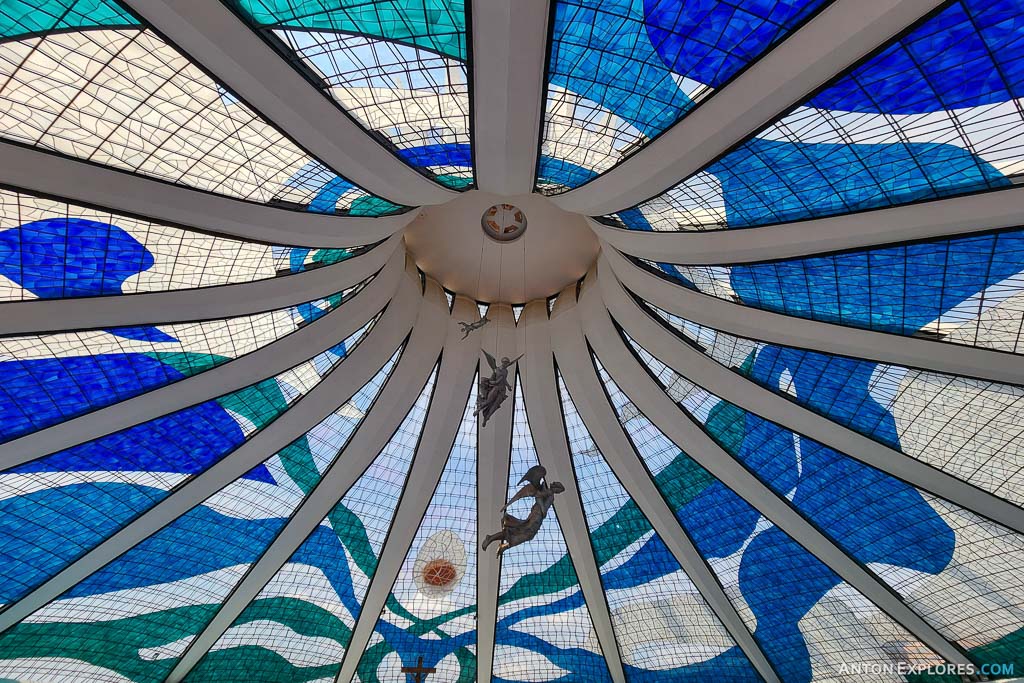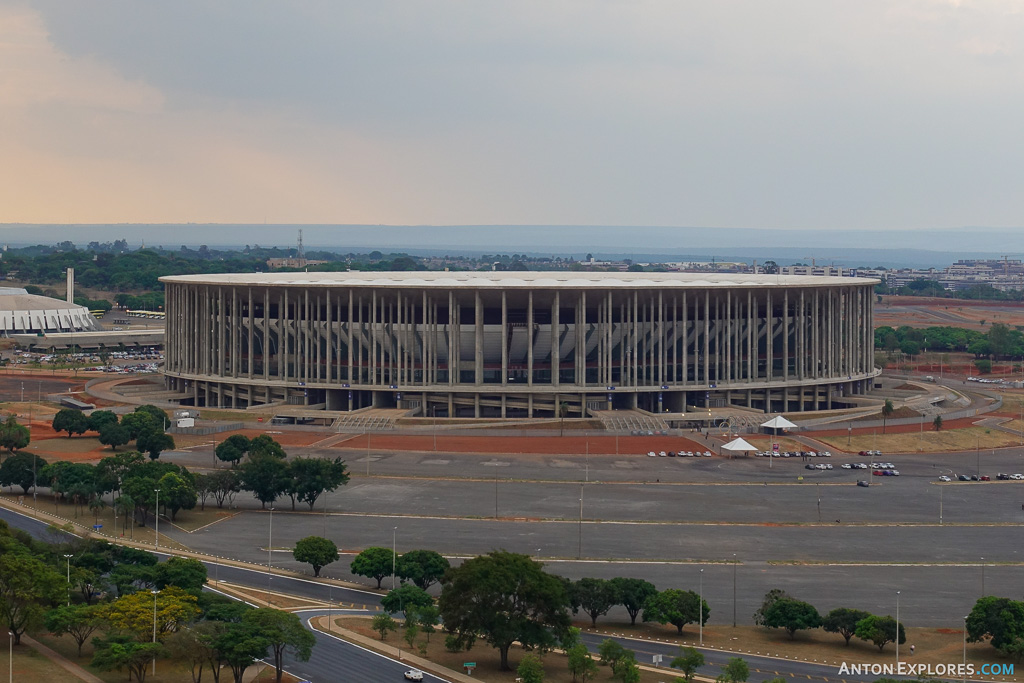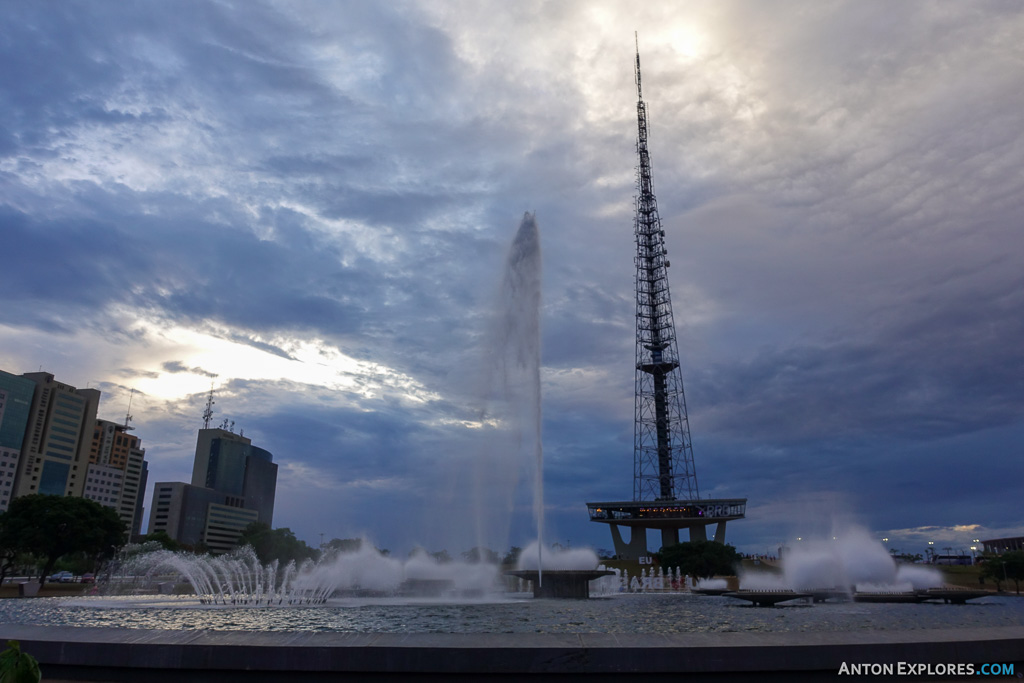
Brazil’s capital Brasília initially wasn’t on my travel list due to the lack of the points of interests, but still I visited it. I’ve just come to my embassy in Brasília to make another passport, since my current one is running out of empty pages. I traveled so much, that in almost 5 years I am left with only 2 pages, which will be used on my December trip to Colombia and Panama. So, I was arriving to the capital of Brazil solely for “business” purpose, but I was able to discover this city and visit a few interesting tourist attractions. So, am I going to return here again? Let’s find out.
Brasília became the capital of Brazil in 1960. The city was built in 41 months, from 1956 to 1960 when it was officially inaugurated. Before that, Rio de Janeiro was the country’s capital, and had been for more than 200 years. Before Rio de Janeiro was the capital, it was the city of Salvador, established in 1549.
Brasília was built to bring the capital in the interior of the country, to better integrate the entire territory of Brazil. Brazil’s capital is known internationally for having applied the principles established in the Athens Charter (1933). The charter laid out a 95-point program for planning and construction of rational cities. The key underlying concept was the creation of independent zones for the four functions of the city: living, working, recreation, and circulation.

The plan of Brasília has been likened to a bird, a bow and arrow, or an airplane. The city has been acclaimed for its use of modernist architecture on a grand scale and for its somewhat utopian city plan. In 1987, UNESCO included Brasília on its World Heritage List because of its architectural work and distinctive urban plan. The Brazilian capital is the only city in the world built in the twentieth century to be on this list.
As of 2022, Brasília has an estimated population of just over 4.8 million people. It is the fourth-most populous city in the country after Sao Paulo, Rio de Janeiro, and Salvador.
A marvel of modernist architecture, the Cathedral of Brasília, is a defining symbol of the city. The columns resemble the rays of the sun or the spikes of the crown. The entrance to the church is a dark and narrow passage, lit up by the natural light coming from the infinite spaces. The metal cross atop the Cathedral holds inside two relics from the Catholic Church. Inside the Cathedral there are three angels suspended by steel cables from the ceiling.

The Cathedral of Brasília was the very first monument to have been erected in the city. Once I entered inside, I was awed at the stained-glass wall of the church, which has been made by joining 36,000 triangular pieces of the colored glass fiber, designed by Franco-Brazilian artist Marianne Peretti. The Cathedral of Brasília officially opened on the 31 of May 1970 and today is able to welcome about 4,000 people.

The TV Tower with a height of 224 meters (35 feet) is located on the Monumental Axis of Brasília and is the fourth tallest tower in all over Brazil as well as South America. The observation deck was opened in 1965 at a height of 75 meters (250 feet) and allows a 360-degree panoramic view of the city. From here you will get an idea of the distribution of the monuments and buildings on the city. It is best to visit the TV Tower at sunset on a clear day, but in my case the sky was covered and gloomy.

During construction of the city, the Paranoá River was dammed to form the artificial lake, Lake Paranoá. Along the shores of this lake are sports clubs, restaurants, a university, and various important government buildings. There is also an impressive bridge that crosses the lake, known as Ponte Juscelino Kubitschek. The name originates from the former president of Brazil, Juscelino Kubitschek, who is considered the main figure supporting the construction of the new capital city, Brasília.
The total length of the bridge is 1,200 meters (3,900 feet). The bridge utilizes three giant arches and has won multiple architectural awards. It was completed in 2002. It’s certainly worth a visit for anyone that comes to Brasília.

The church is made of 80 concrete columns that support 7400 pieces of illuminated Murano glass, symbolizing a starry sky, which cast a blue submarine glow over the whole interior. Once I’ve seen it, I loved it immediately, especially because blue is my favorite color. The chandelier at the Santuario Dom Bosco church weighs 2,5 tons and consists of 435 light bulbs. In my opinion this church is even more beautiful than the Cathedral of Brasília.

The Plaza of the Three Powers is a place whose name derives from the meeting of the three governmental powers around it: the Executive, represented by the Planalto Palace, the Legislative, represented by Congress National and the judiciary, represented by the Supreme Federal Court. It is one of the biggest attractions in Brasília and a fascinating example of modern Brazilian architecture designed by Oscar Niemeyer. The plaza also has the world’s largest flag to be continuously flown.

Given that this trip was not planned in a touristy way, since I was coming to the city for business purpose, I realized that there are things to see, some of which I haven’t included on this list. So, is it worth for me returning to Brasília again? Probably yes, but not soon, because there are so many other more important destinations to explore in Brazil.








